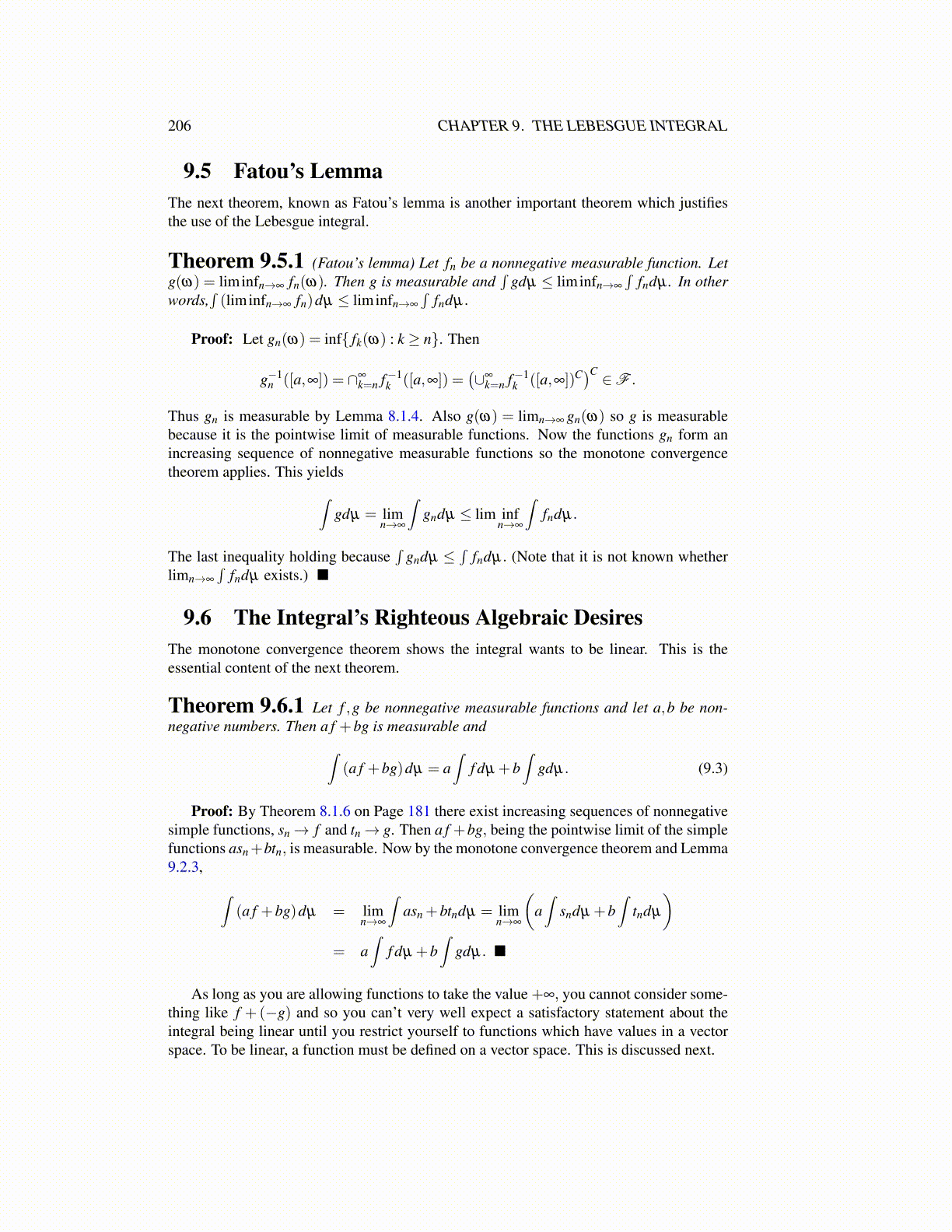
206 CHAPTER 9. THE LEBESGUE INTEGRAL
9.5 Fatou’s LemmaThe next theorem, known as Fatou’s lemma is another important theorem which justifiesthe use of the Lebesgue integral.
Theorem 9.5.1 (Fatou’s lemma) Let fn be a nonnegative measurable function. Letg(ω) = liminfn→∞ fn(ω). Then g is measurable and
∫gdµ ≤ liminfn→∞
∫fndµ . In other
words,∫(liminfn→∞ fn)dµ ≤ liminfn→∞
∫fndµ.
Proof: Let gn(ω) = inf{ fk(ω) : k ≥ n}. Then
g−1n ([a,∞]) = ∩∞
k=n f−1k ([a,∞]) =
(∪∞
k=n f−1k ([a,∞])C
)C ∈F .
Thus gn is measurable by Lemma 8.1.4. Also g(ω) = limn→∞ gn(ω) so g is measurablebecause it is the pointwise limit of measurable functions. Now the functions gn form anincreasing sequence of nonnegative measurable functions so the monotone convergencetheorem applies. This yields∫
gdµ = limn→∞
∫gndµ ≤ lim inf
n→∞
∫fndµ.
The last inequality holding because∫
gndµ ≤∫
fndµ. (Note that it is not known whetherlimn→∞
∫fndµ exists.) ■
9.6 The Integral’s Righteous Algebraic DesiresThe monotone convergence theorem shows the integral wants to be linear. This is theessential content of the next theorem.
Theorem 9.6.1 Let f ,g be nonnegative measurable functions and let a,b be non-negative numbers. Then a f +bg is measurable and∫
(a f +bg)dµ = a∫
f dµ +b∫
gdµ. (9.3)
Proof: By Theorem 8.1.6 on Page 181 there exist increasing sequences of nonnegativesimple functions, sn→ f and tn→ g. Then a f +bg, being the pointwise limit of the simplefunctions asn+btn, is measurable. Now by the monotone convergence theorem and Lemma9.2.3, ∫
(a f +bg)dµ = limn→∞
∫asn +btndµ = lim
n→∞
(a∫
sndµ +b∫
tndµ
)= a
∫f dµ +b
∫gdµ. ■
As long as you are allowing functions to take the value +∞, you cannot consider some-thing like f +(−g) and so you can’t very well expect a satisfactory statement about theintegral being linear until you restrict yourself to functions which have values in a vectorspace. To be linear, a function must be defined on a vector space. This is discussed next.